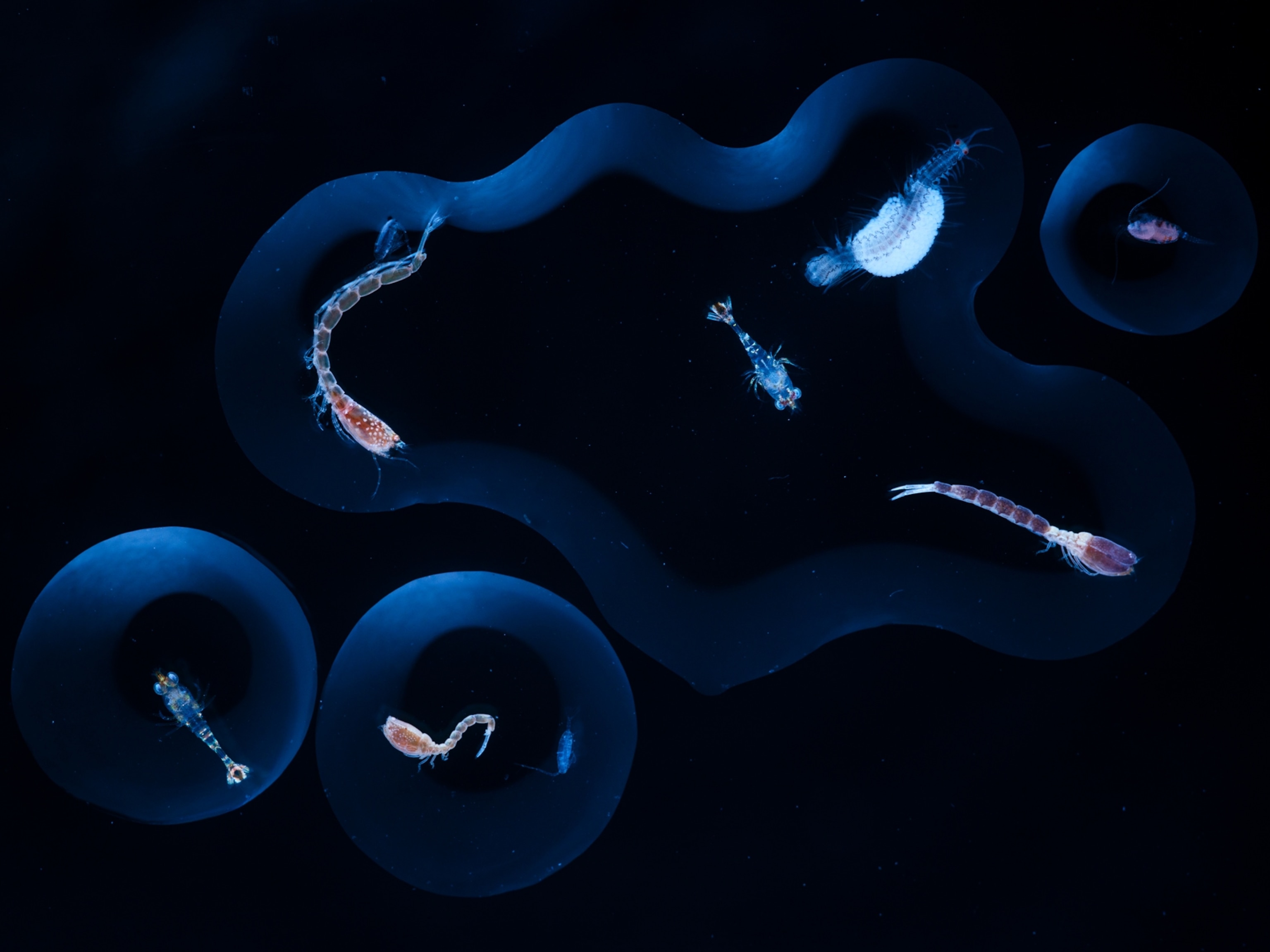
Half-Orange, Half-Brown Lobster Found—How Rare Is It?
The split-colored specimen is among a group of colorful crustaceans caught every year, including calico and blue lobsters.
A rare split-colored lobster caught in Maine last week is said to be a one-in-50-million catch. But is the half-orange, half-brown crustacean really that unusual?
Probably not, says Robert C. Bayer, executive director of the Lobster Institute at the University of Maine in Orono. "They’re uncommon, but not that uncommon," Bayer says. "We see them every year." (Read more about colorful lobsters.)
An unknown fisherman, who recently caught the striking specimen, donated it to the Pine Point Fisherman's Co-op in Scarborough, Maine.
Colorful Club
The split-colored lobster is just one member in a bizarre family of colorful crustaceans, each with its own statistical variation, according to research by the Lobster Institute. Calico lobsters, with speckled brown and orange shells, are 1 in 30 million. Blue lobsters? One in two million.
Lobsters usually sport a combination of yellow, red, and blue hues, though they appear to be dark brown. (Related: "Watch: Very Rare Calico Lobster Caught in New Hampshire.")
Crimson red lobsters—not just ones that turn red when cooked—are a one-in-ten-million find. Bayer says these are prime catches for pranksters, who serve the live animal on a plate to unsuspecting dinner guests.
Albino lobsters are the rarest in the bunch, with odds nearing 1 in 100 million. Sometimes referred to as "crystal" lobsters, they're the only ones that don't turn red in the pot. (Also see "Lobster Caught 'Half Cooked' in Maine.")
The cause of the odd colorations is a mystery, though it's likely a genetic mutation of sorts. "I don't think the actual mechanism is known," Bayer says.
He adds that restaurants often display the bright sea creatures for show. Fishermen also donate them to aquariums.
As for the newly caught lobster, it will soon live in the Maine State Aquarium for thousands of visitors to see.
Follow Greta Weber on Twitter.
Related Topics
You May Also Like
Go Further
Animals
- How can we protect grizzlies from their biggest threat—trains?How can we protect grizzlies from their biggest threat—trains?
- This ‘saber-toothed’ salmon wasn’t quite what we thoughtThis ‘saber-toothed’ salmon wasn’t quite what we thought
- Why this rhino-zebra friendship makes perfect senseWhy this rhino-zebra friendship makes perfect sense
- When did bioluminescence evolve? It’s older than we thought.When did bioluminescence evolve? It’s older than we thought.
- Soy, skim … spider. Are any of these technically milk?Soy, skim … spider. Are any of these technically milk?
Environment
- Are the Great Lakes the key to solving America’s emissions conundrum?Are the Great Lakes the key to solving America’s emissions conundrum?
- The world’s historic sites face climate change. Can Petra lead the way?The world’s historic sites face climate change. Can Petra lead the way?
- This pristine piece of the Amazon shows nature’s resilienceThis pristine piece of the Amazon shows nature’s resilience
- Listen to 30 years of climate change transformed into haunting musicListen to 30 years of climate change transformed into haunting music
History & Culture
- Meet the original members of the tortured poets departmentMeet the original members of the tortured poets department
- Séances at the White House? Why these first ladies turned to the occultSéances at the White House? Why these first ladies turned to the occult
- Gambling is everywhere now. When is that a problem?Gambling is everywhere now. When is that a problem?
- Beauty is pain—at least it was in 17th-century SpainBeauty is pain—at least it was in 17th-century Spain
Science
- Here's how astronomers found one of the rarest phenomenons in spaceHere's how astronomers found one of the rarest phenomenons in space
- Not an extrovert or introvert? There’s a word for that.Not an extrovert or introvert? There’s a word for that.
- NASA has a plan to clean up space junk—but is going green enough?NASA has a plan to clean up space junk—but is going green enough?
- Soy, skim … spider. Are any of these technically milk?Soy, skim … spider. Are any of these technically milk?
Travel
- Dina Macki on Omani cuisine and Zanzibari flavoursDina Macki on Omani cuisine and Zanzibari flavours
- How to see Mexico's Baja California beyond the beachesHow to see Mexico's Baja California beyond the beaches
- Could Mexico's Chepe Express be the ultimate slow rail adventure?Could Mexico's Chepe Express be the ultimate slow rail adventure?




